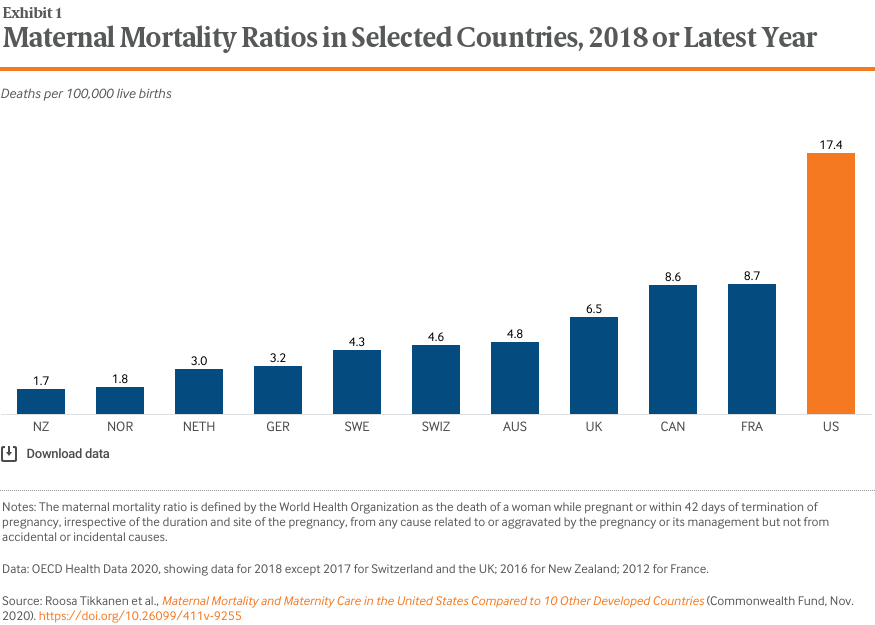Exploring Maternal Mortality Rates: Is the US Leading the Pack

Introduction
Maternal mortality rates are a critical indicator of a country’s healthcare system and the well-being of its population. While maternal mortality has been decreasing globally, the United States has been lagging behind in making significant progress. This article delves into the maternal mortality rates in the US, analyzes the factors contributing to this problem, and examines whether the US is leading the pack in this troubling statistic.
Understanding Maternal Mortality Rates
Maternal mortality refers to the death of a woman during pregnancy, childbirth, or within 42 days after delivery or termination of pregnancy. It is an important indicator of the overall quality and accessibility of healthcare services for women, as well as the socioeconomic factors affecting maternal health.
Maternal Mortality Rates in the US
Despite being a high-income country, the United States has been grappling with alarmingly high maternal mortality rates compared to other developed nations. According to data from the Centers for Disease Control and Prevention (CDC), the US has experienced a significant increase in maternal mortality rates over the past two decades.
Factors Contributing to High Maternal Mortality Rates in the US
- Inadequate access to healthcare: Lack of access to affordable healthcare, particularly for low-income and marginalized communities, has been a significant barrier to receiving quality prenatal and postnatal care in the US.
- Racial disparities: African American and Native American women are disproportionately affected by maternal mortality. These communities face systemic racism, implicit bias, and socioeconomic challenges that result in poorer healthcare outcomes.
- Fragmented healthcare system: The US healthcare system is complex and fragmented, making it difficult for women to receive continuous and coordinated care throughout the maternity process.
- Maternal health conditions: The prevalence of pre-existing conditions, such as obesity, hypertension, and diabetes, among women of childbearing age contributes to the increased risk of complications during pregnancy and childbirth.
Comparative Analysis: Is the US Leading the Pack?
While the US has high maternal mortality rates compared to other developed countries, it is essential to examine the global context to determine whether the US is leading the pack.
- Global trends: Many countries, especially those in Europe, have made substantial progress in reducing maternal mortality rates. These countries prioritize comprehensive healthcare systems, provide universal access to care, and have robust maternal health policies in place.
- Regional variations: Within the US, there are significant regional variations in maternal mortality rates. Some states have made significant strides in improving maternal health outcomes, while others continue to struggle. This variation indicates that progress is possible and highlights the importance of targeted interventions.
- International comparisons: When comparing the US to other developed countries, it becomes evident that the US is not leading the pack. Countries like Sweden, Norway, and Finland consistently report lower maternal mortality rates, indicating the presence of effective healthcare systems and policies.
Addressing the Issue: Initiatives and Solutions
Recognizing the urgency of the situation, efforts are underway to address the high maternal mortality rates in the US. Several initiatives have been launched at the federal, state, and community levels to improve access to healthcare, reduce racial disparities, and promote evidence-based practices. These include expanding Medicaid coverage, implementing maternal mortality review committees, and investing in community-based programs.
Conclusion
While the US continues to face high maternal mortality rates, it is not leading the pack in a positive sense. Other countries have successfully tackled this issue through comprehensive healthcare systems, targeted policies, and a commitment to addressing racial disparities. To improve maternal health outcomes, the US must prioritize accessible and equitable healthcare for all women, tackle systemic racism, and learn from successful international models. Only through concerted efforts can the US make significant progress in reducing maternal mortality rates and ensuring the well-being of women and families.
